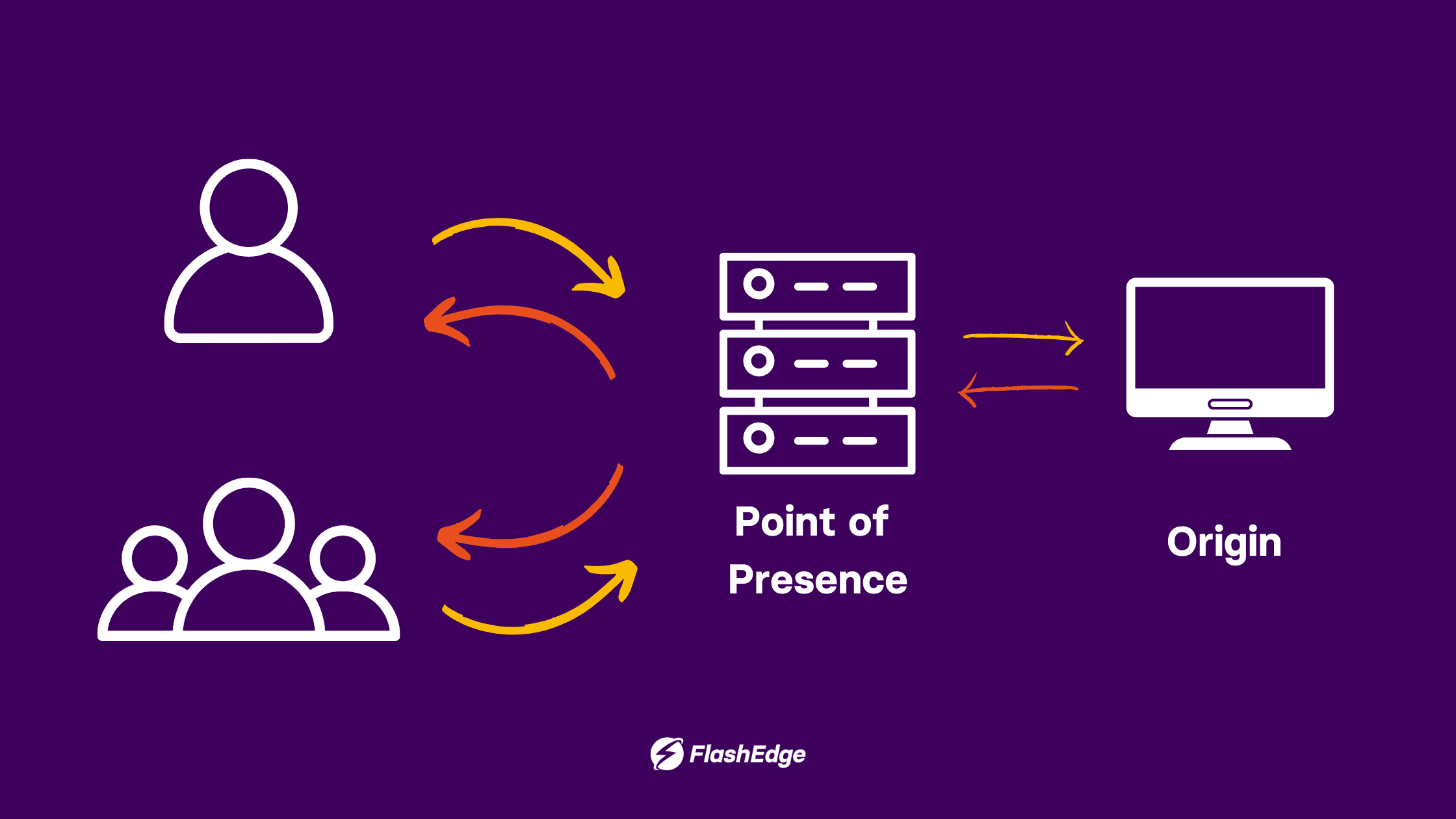What Is a Point of Presence (PoP)? Understand the Backbone of Network Infrastructure!

What is a PoP in networking? Discover how Points of Presence support faster, more reliable content delivery and why they matter.
When users access digital content, speed and stability matter more than ever. But even the fastest origin servers can fall short when delivering content across geographies. Distance between users and infrastructure creates latency, which directly affects page load times, video quality, and overall responsiveness.
This challenge becomes even more complex at scale. Whether you're running a global website, SaaS platform, or media-heavy application, relying solely on centralized data centers is no longer enough.
This is where the concept of a network Point of Presence (PoP) comes into play. CDNs and cloud providers use PoPs to minimize delivery delays and improve performance across regions.
In this blog, we’ll explain the meaning of a Point of Presence in networking, its role in content delivery, and how it compares to traditional data centers. Read on!
What is a Point of Presence (PoP)?

Their main purpose is to reduce latency by shortening the distance between users and the content or services they’re trying to access.
The Importance of PoP in Networking and CDNs
- PoPs cache static content at the edge, so repeated requests are served instantly without going back to the origin, cutting response time and server load.
- They distribute incoming traffic intelligently across multiple servers or regions, helping prevent overload and maintain consistent performance even during traffic spikes.
- By responding from the closest available location, PoPs significantly reduce latency, especially for users far from the primary data center.
- They enable CDNs to scale globally by handling massive volumes of requests in parallel, without requiring every request to touch the core infrastructure.
- With distributed PoPs, traffic can automatically reroute in case of failures, improving reliability and ensuring content stays available even if one node goes down.
How Does a Point of Presence (PoP) Work?

PoPs are built with core infrastructure: routers to direct traffic, switches for fast data transfer, and servers to cache and process content. Many also include DNS resolvers, firewalls, and anti-malware systems to manage traffic securely and efficiently.
In CDNs, PoPs are essential for distributing content at scale. If the requested content is cached locally, it’s served instantly. If not, the PoP pulls it from the origin, delivers it, and caches it for future use.
Advanced PoPs may also use optical fiber, multiplexers, or virtual networking to handle high-speed traffic and extend flexibility. Many now support lightweight compute functions too, enabling faster access closer to the user. Redundant power, routing, and switching systems ensure uptime, even during failures.
This distributed design helps websites and applications load faster, scale globally, and remain resilient under load.
Point of Presence (PoP) vs. Data Centers
Point of Presence (PoP) and data centers often get grouped together, but they serve distinct functions in network architecture. A data center is the control hub where content is created, stored, and managed. A Point of Presence is the distribution layer built to move that content closer to users.
Rather than replacing each other, PoPs and data centers work in tandem. Here’s how they compare:

Together, PoPs and data centers form a layered delivery system where the data center serves the core, and the PoPs act as the access layer that ensures faster, region-specific delivery.
Types of Point of Presence
Not all PoPs are built the same. Based on how they are deployed and managed, PoPs typically fall into two categories: physical PoPs and virtual PoPs.
1. Physical PoPs
These are actual, hardware-backed locations placed in telecom hubs or edge data centers. They include dedicated caching servers, routers, and load balancers. Physical PoPs offer the highest level of performance, control, and reliability. They're typically used in high-traffic regions where consistent throughput and low latency are non-negotiable. However, they require capital investment, hardware maintenance, and on-site infrastructure partnerships.
2. Virtual PoPs (vPoPs)
Virtual PoPs rely on third-party infrastructure or cloud service providers. They are software-defined and deployed remotely, without the need to manage physical equipment. While they don’t offer the same raw performance as physical PoPs, they excel in flexibility. Virtual PoPs are ideal for expanding into less critical or emerging markets quickly and cost-effectively. CDNs often deploy vPoPs to increase global coverage without the overhead of physical build-outs.

How Can You Benefit From FlashEdge CDN?
Optimizing your network for speed, reliability, and global reach starts with a strong PoP strategy, but it also depends on the CDN behind it. That’s where FlashEdge makes a difference.

FlashEdge CDN elevates your content delivery with its enterprise-grade network, optimized to bring dynamic and static content closer to your users globally. With over 700 Points of Presence worldwide and a robust set of features, FlashEdge ensures rapid content delivery across continents. Its flexible, pay-as-you-go pricing model eliminates hidden fees, making top-tier CDN services accessible without the hefty costs.
FlashEdge enhances your infrastructure with robust security features, including SSL/TLS encryption and DDoS protection. Whether you're streaming videos, delivering software, or accelerating web applications, FlashEdge is designed to boost performance and user satisfaction.
Start your free trial with FlashEdge CDN today and experience enhanced speed, reliability, and security firsthand.
Ready to start your journey to low latency and reliable content delivery?
If you’re looking for an affordable CDN service that is also powerful, simple and globally distributed, you are at the right place. Accelerate and secure your content delivery with FlashEdge.
Get a Free Trial